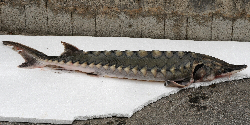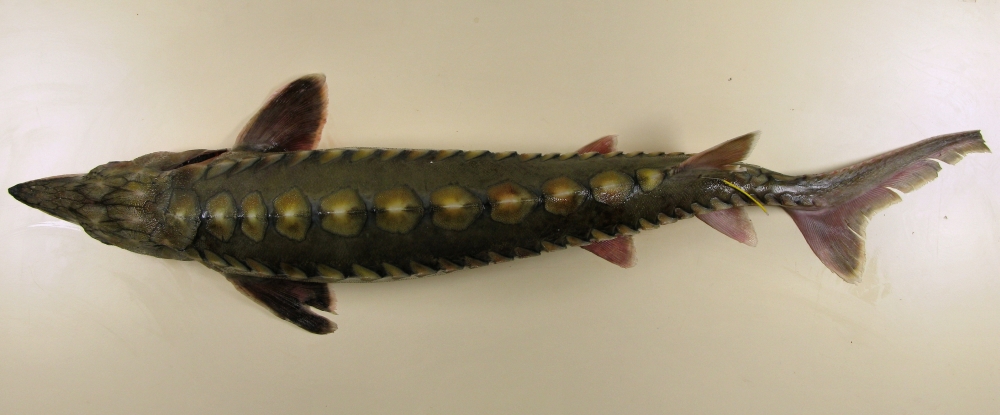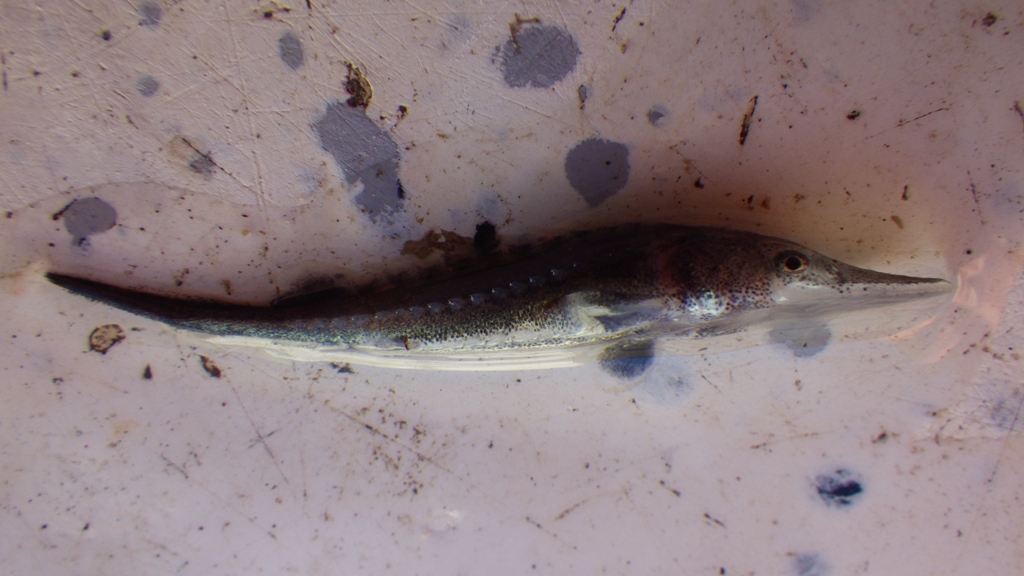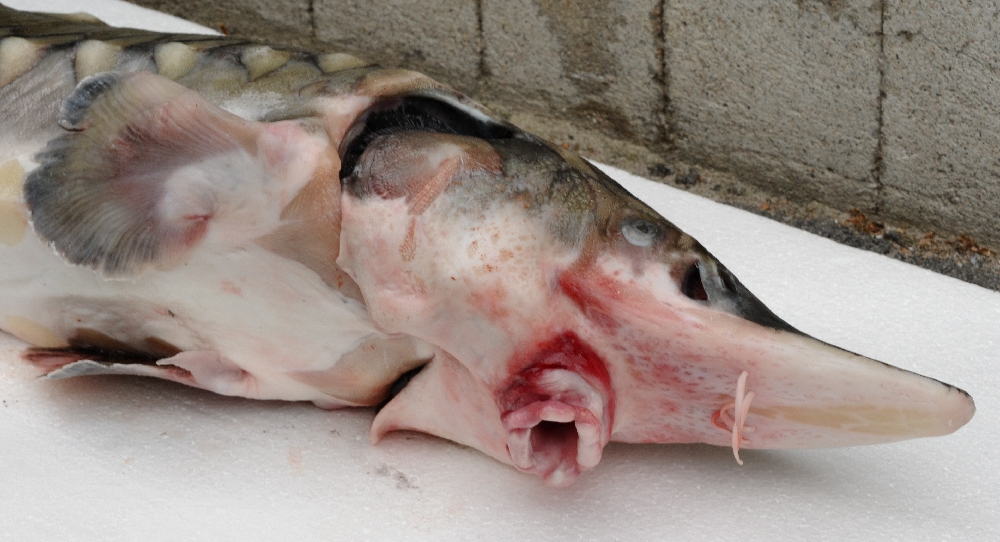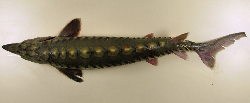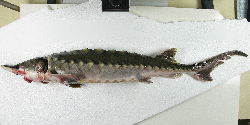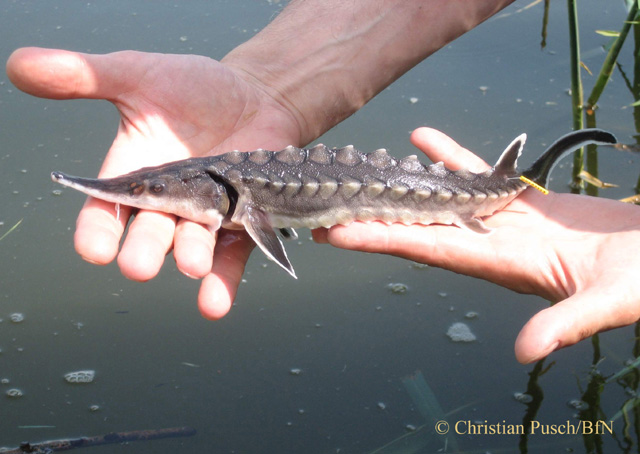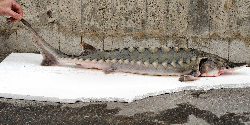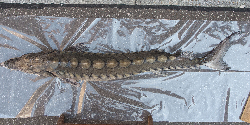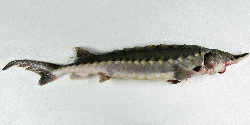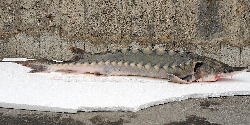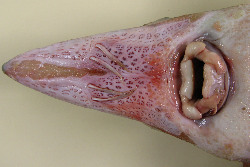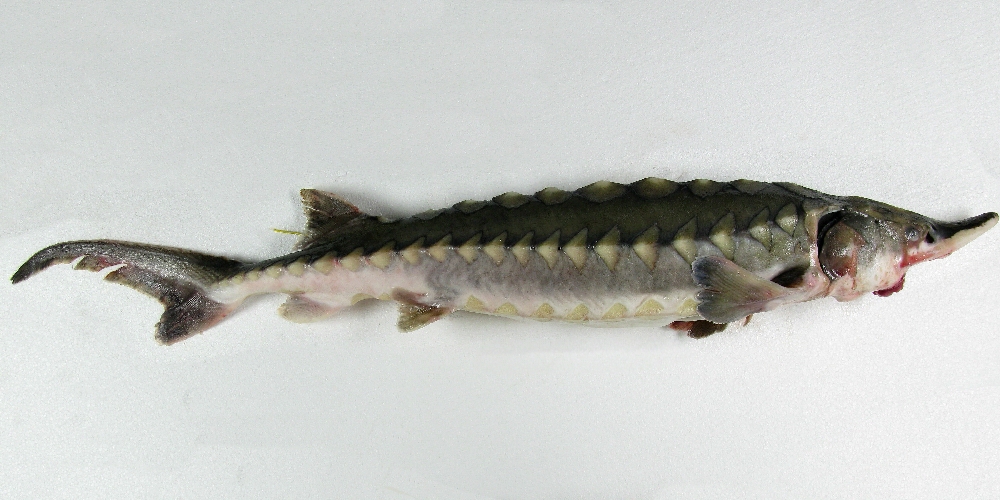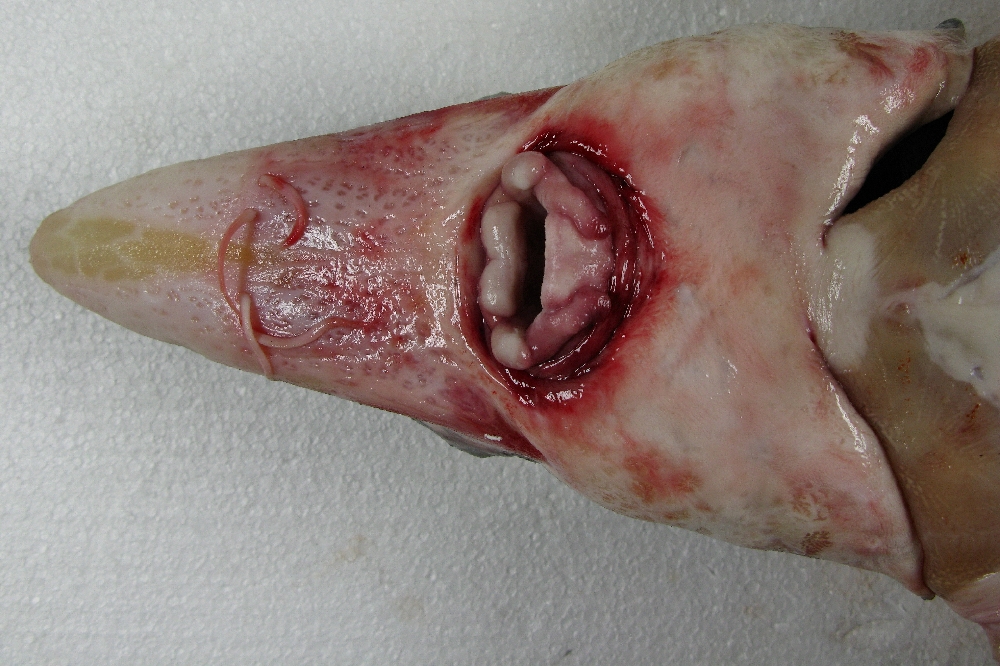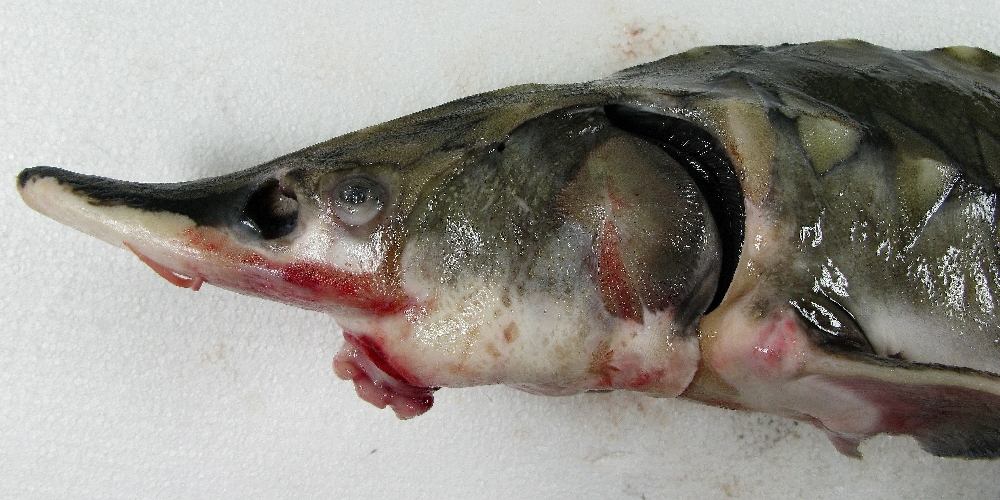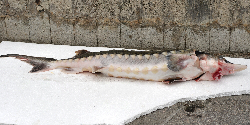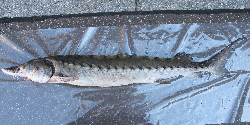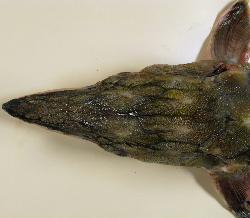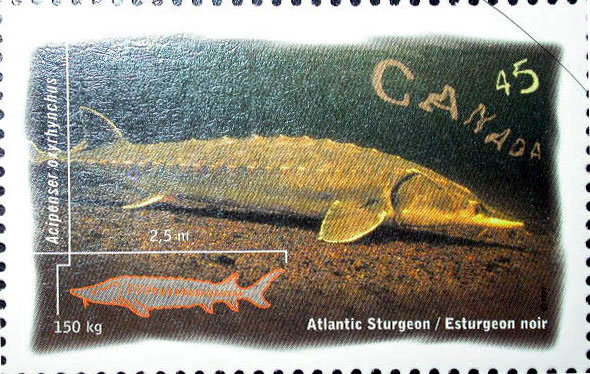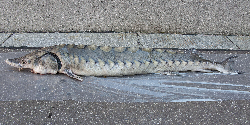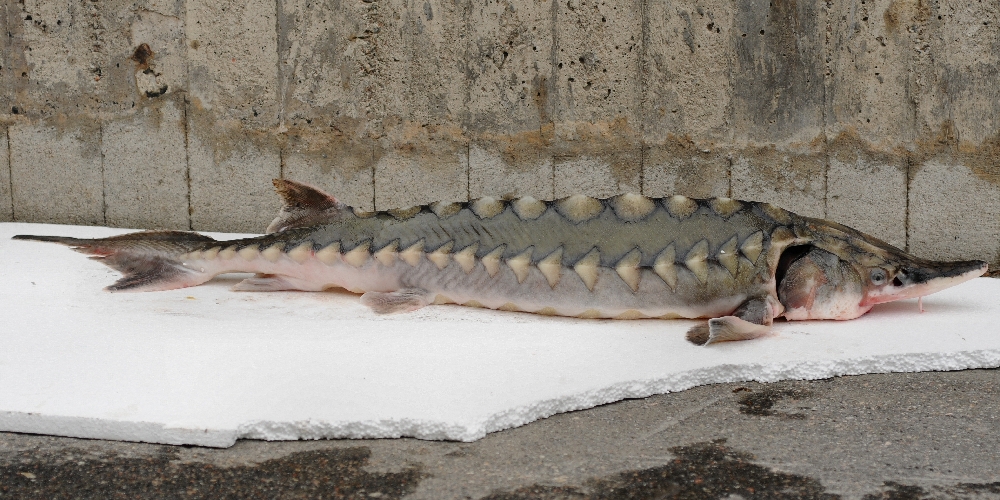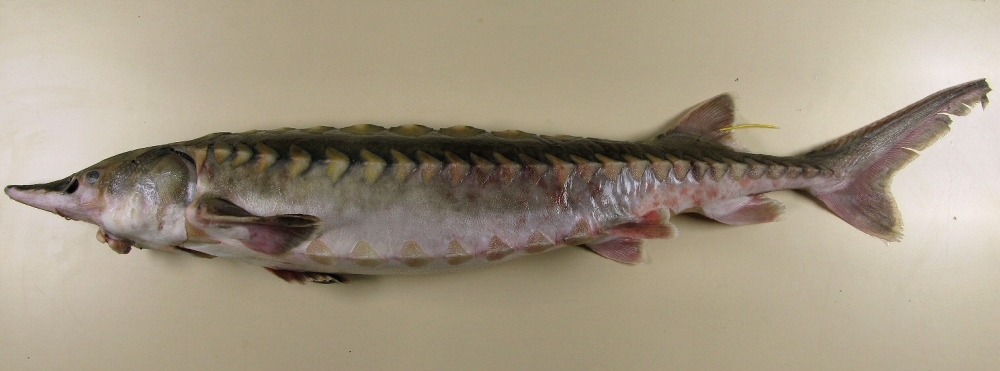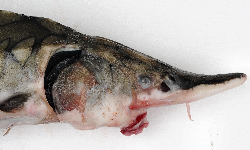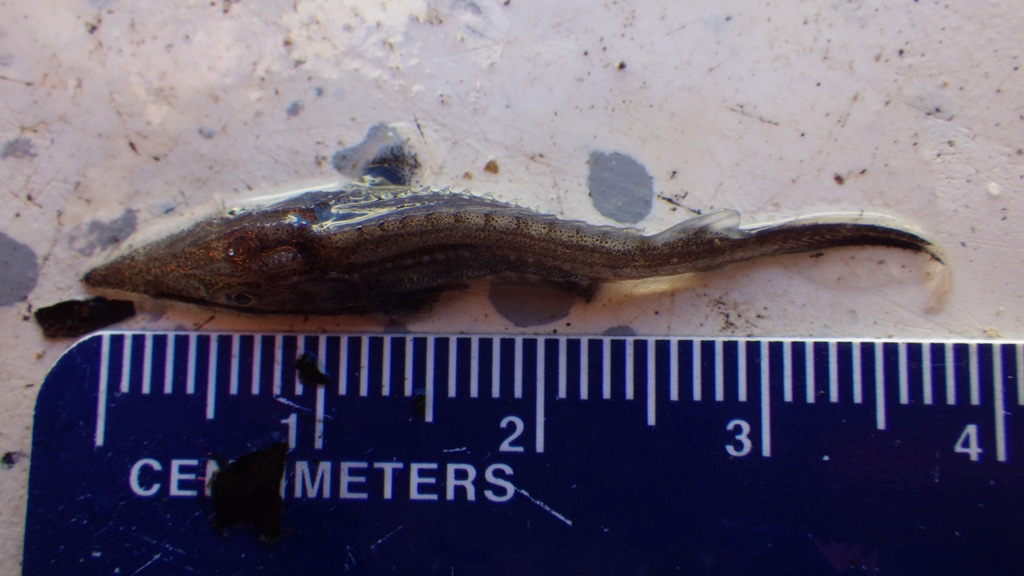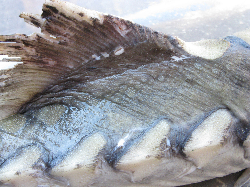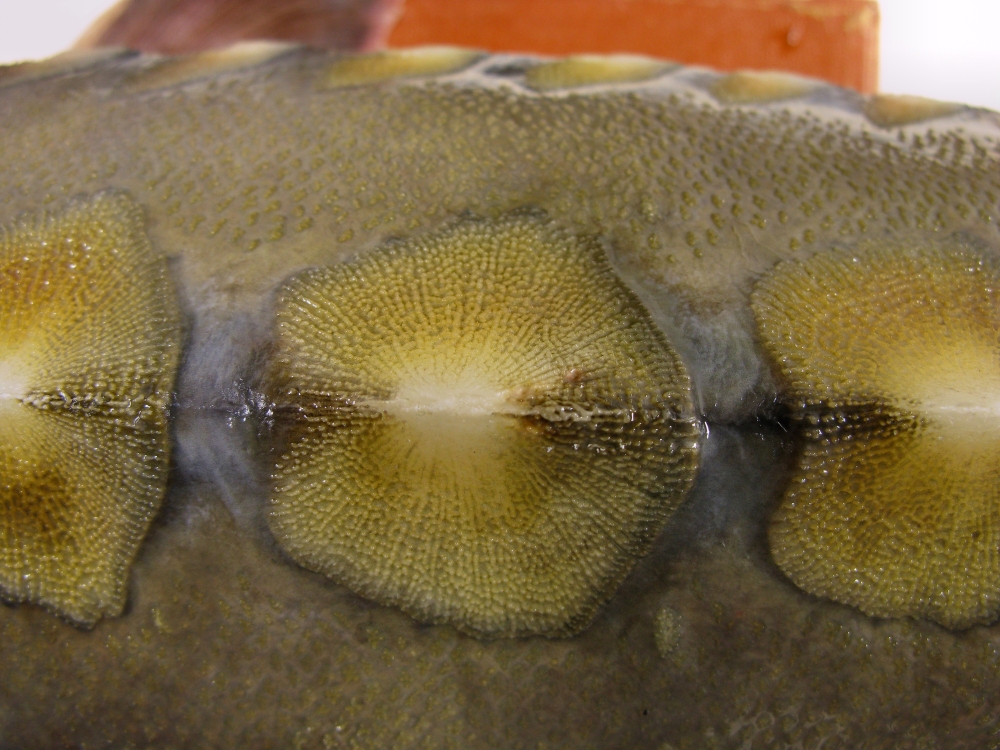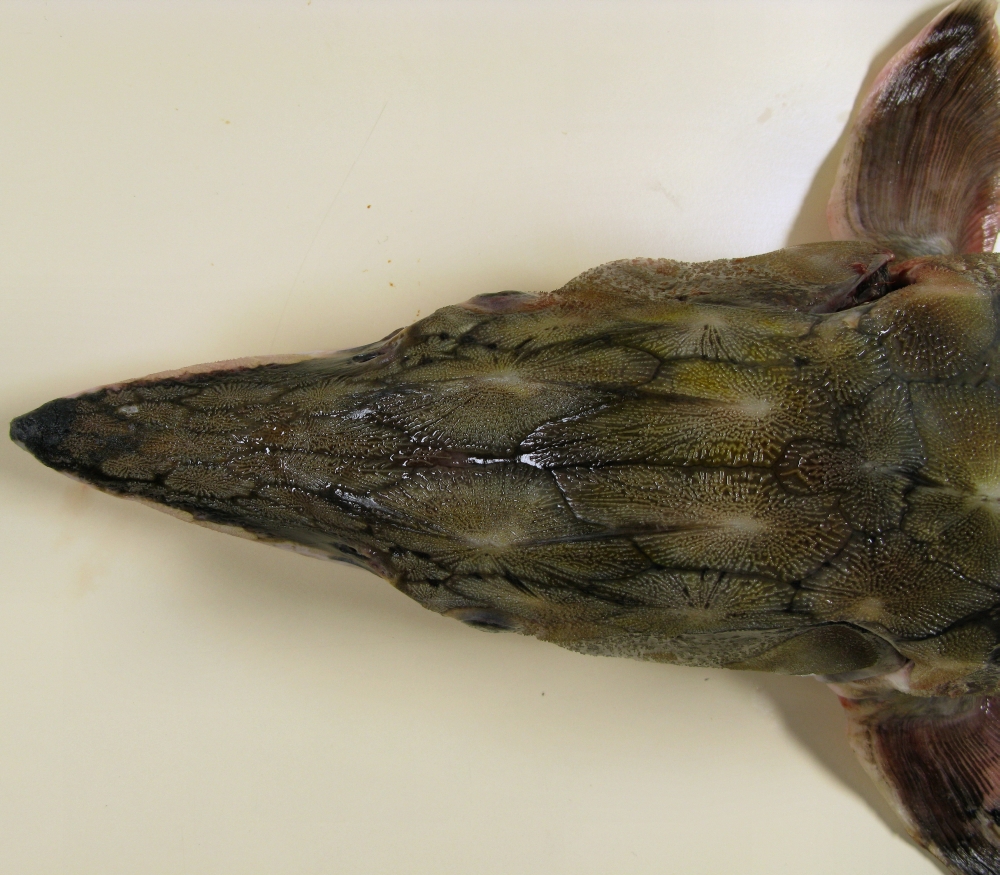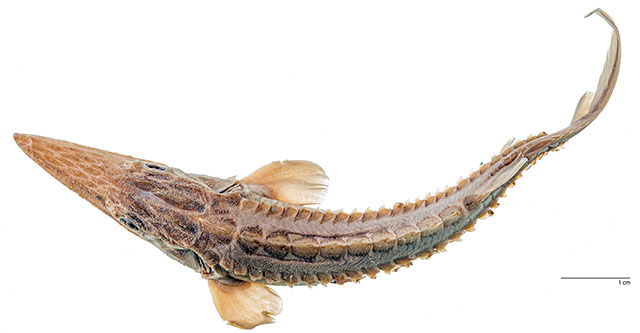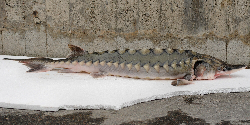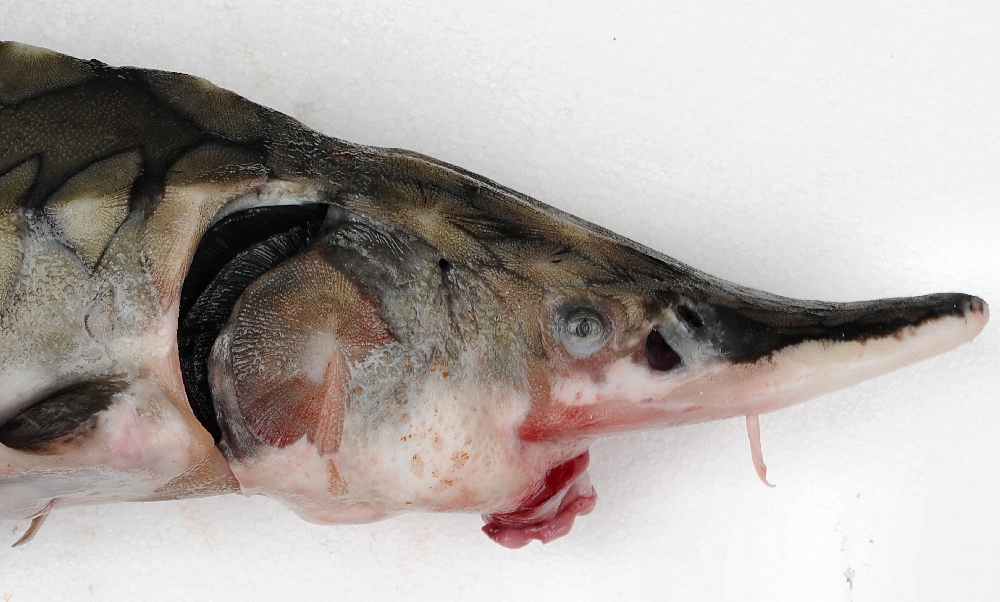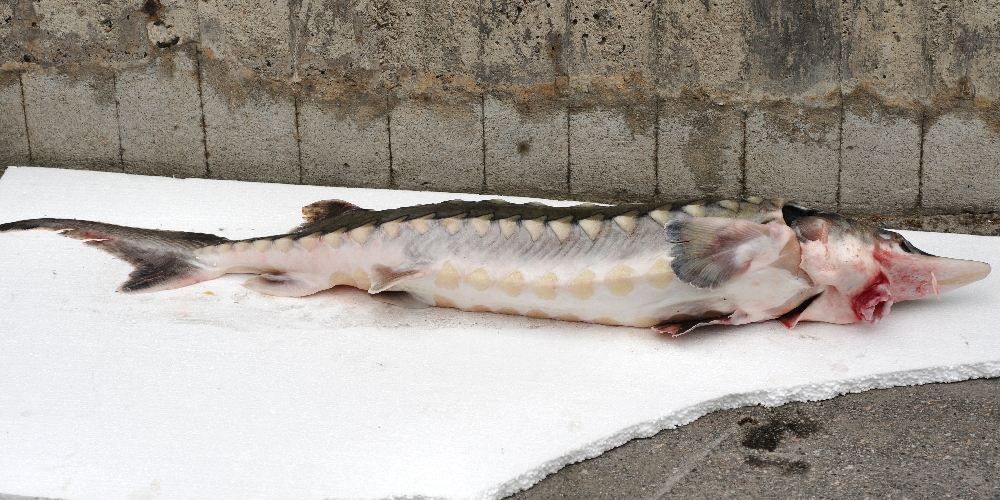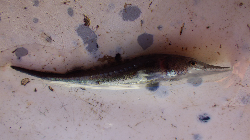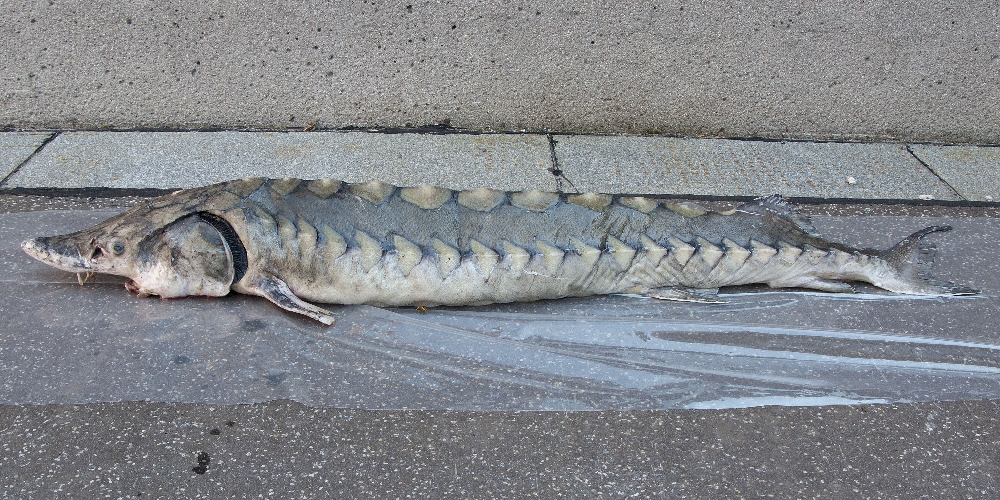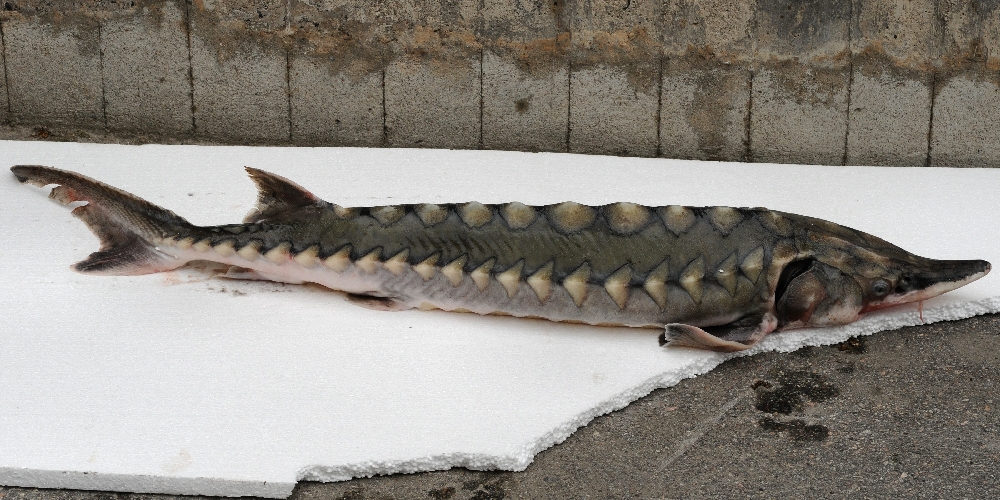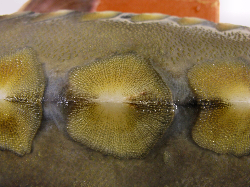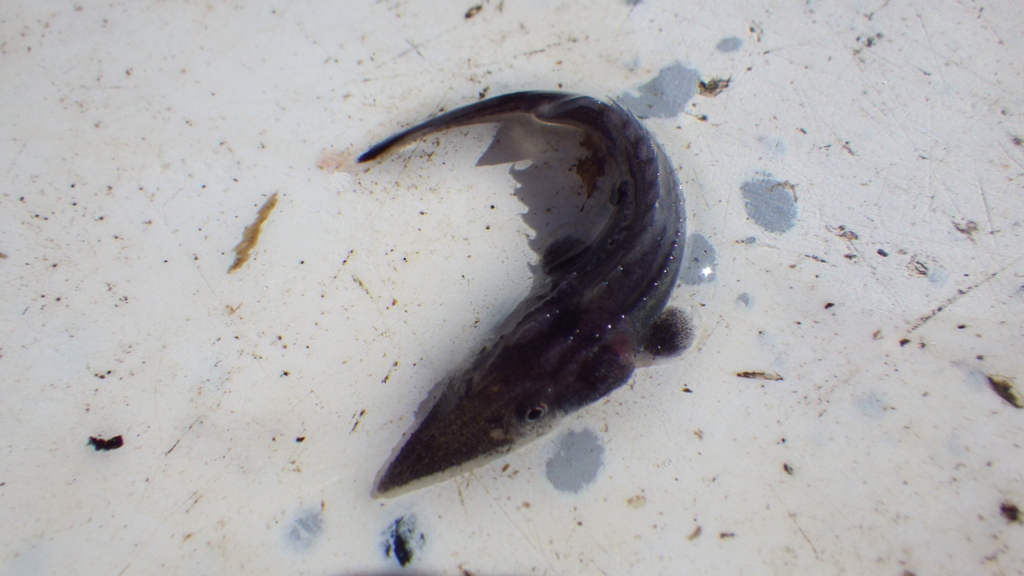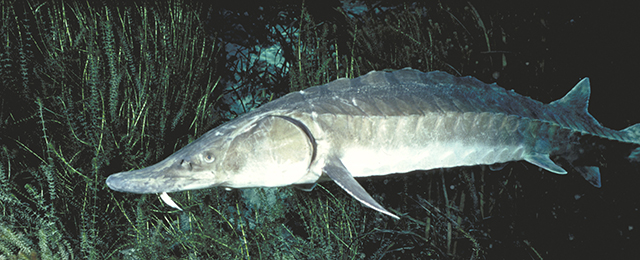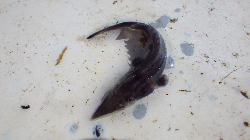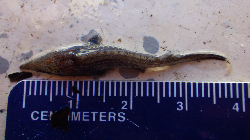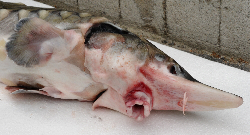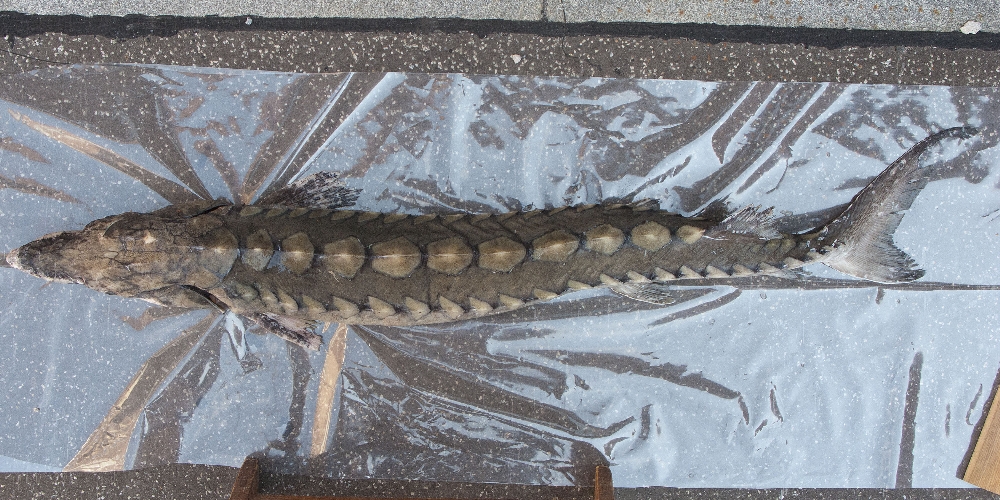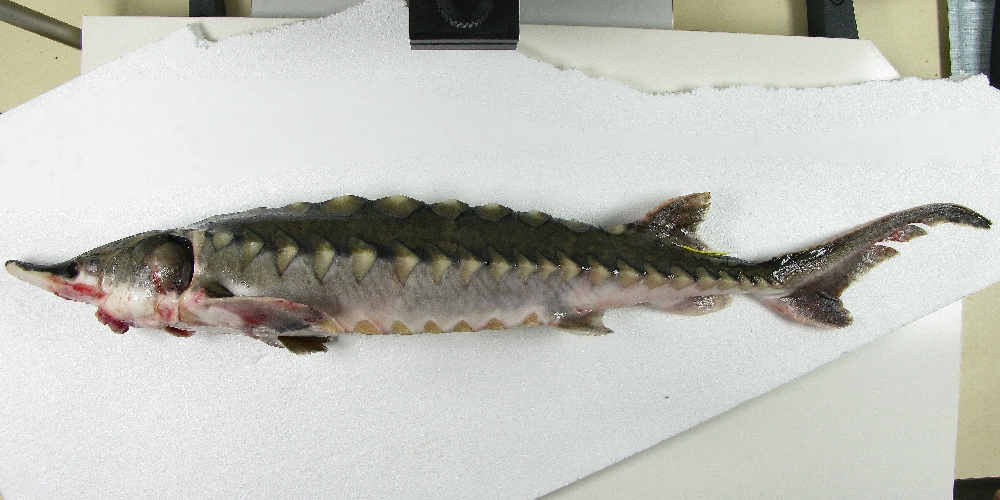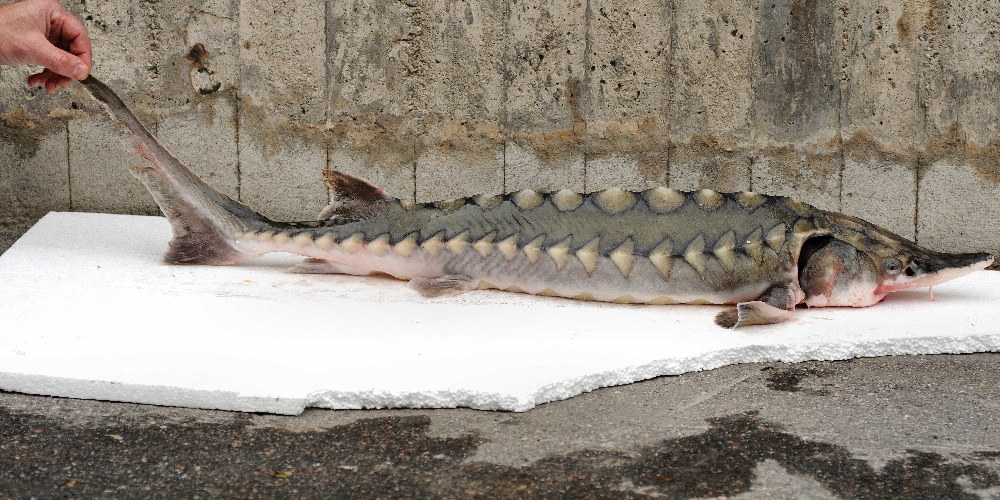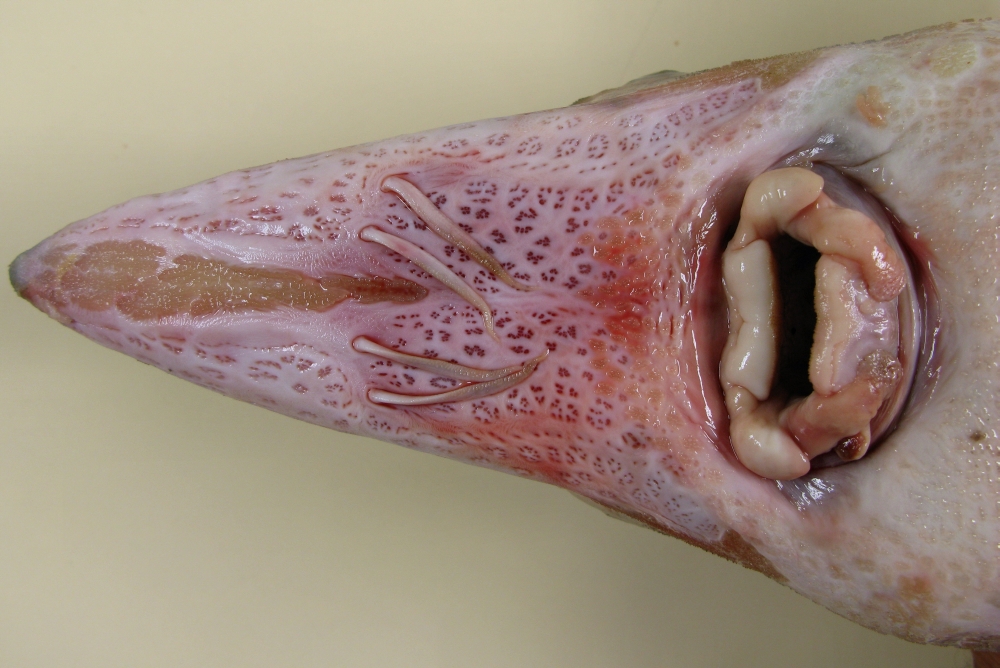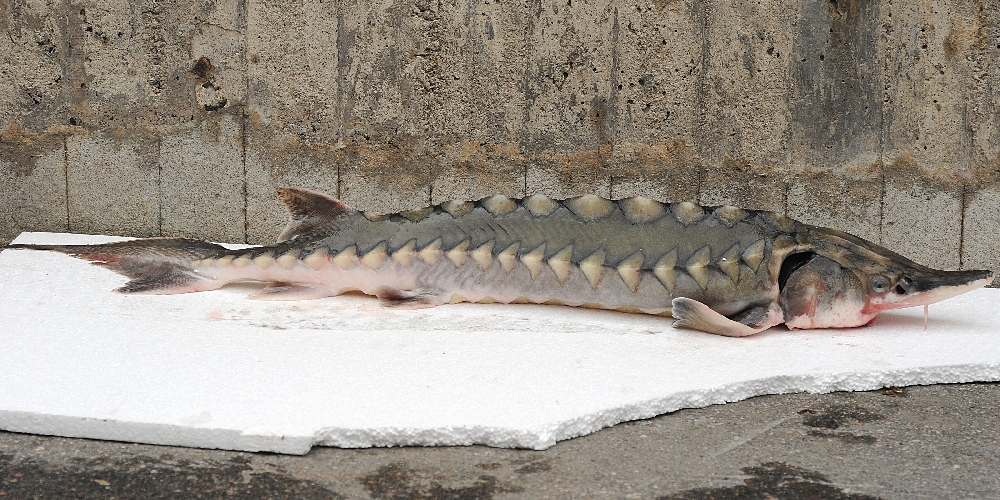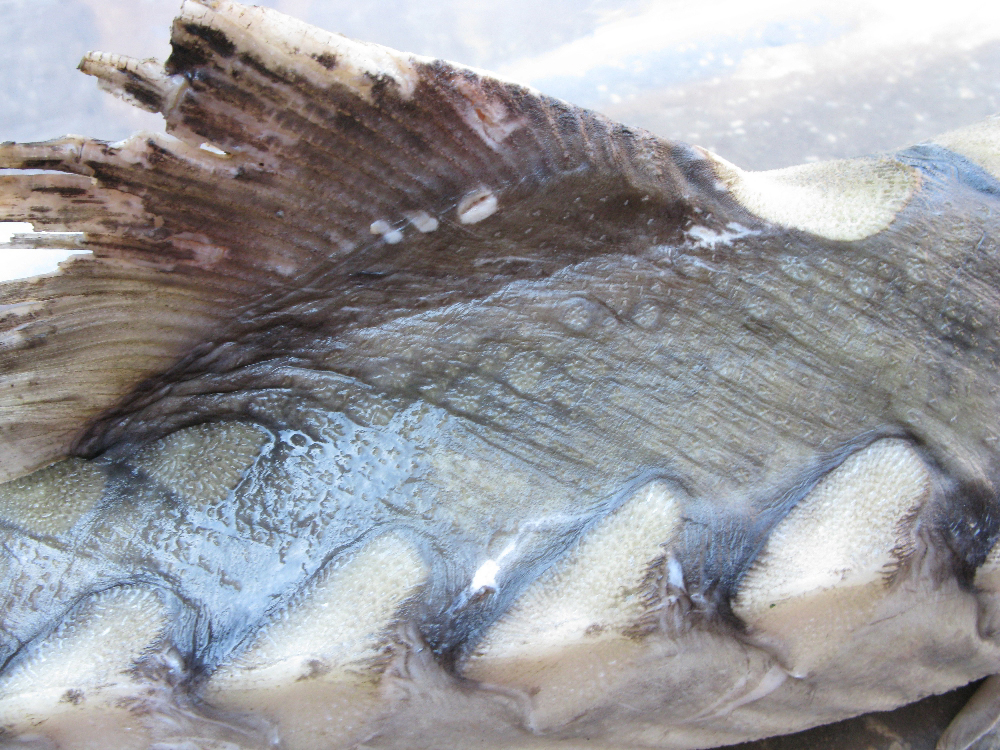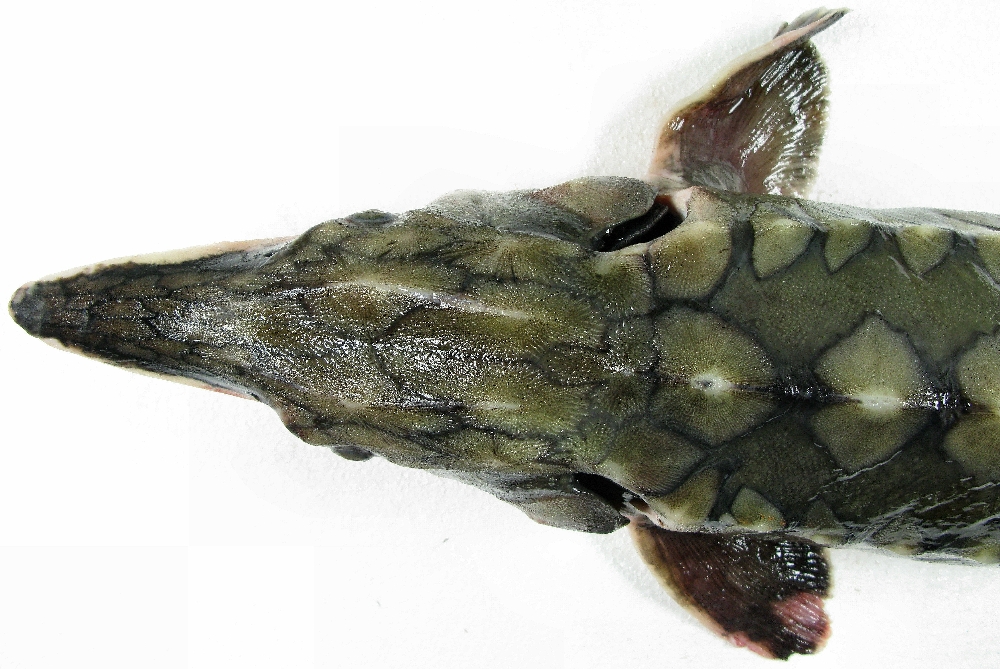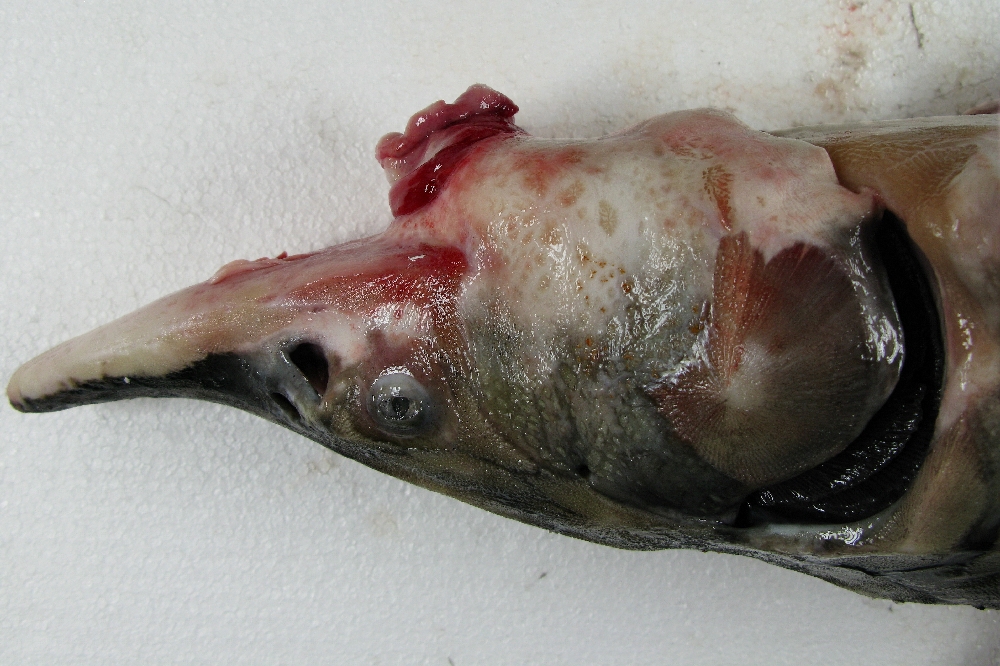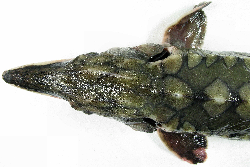Acipenser oxyrinchus Mitchill, 1815
Description
Dorsal spines (total): 0; Dorsal soft rays (total): 30 - 46; Anal spines: 0; Anal soft rays: 22 - 32. Elongate fish, pentagonal in cross section and shark-like fins (Ref. 26938). Double row of pre anal shields. Presence of a soft fontanelle. Bony shields are oval. Carina on dorsal shields do not have a conspicuous hook. Head and back bluish-black and lower surface whitish (Ref. 37032). Snout long, sharply V-shaped. 2 pairs of short, slender barbels in transverse line midway between end of snout and anterior edge of mouth (Ref. 4639). Viscera pale (Ref. 7251). Presence of 4 small scutes, usually as 2 pairs between anal fin and caudal fulcrum (Ref. 86798).
Common Names
No common names available.
Taxonomic Hierarchy
Kingdom: Animalia
Phylum: Chordata
Class: Chondrostei
Order: Acipenseriformes
Family: Acipenseridae
Genus: Acipenser
Species: Acipenser oxyrinchus Mitchill, 1815
Climate Zone
Location
Biology
Anadromous species. Occurs solitarily or in small groups; inhabits shallow waters of continental shelves. At the sea, it occurs in coastal and estuarine areas on soft bottom (Ref. 59043) down to a depth of 50 m (Ref. 89115). Adults are highly migratory while at sea (Ref. 57533) and make long migrations along the coast (Ref. 59043). Feeds on benthhic invertebrates such as mollusks, crustaceans and aquitic insects from the sediments (Ref. 93252). They forage mainly in brackish waters (Ref. 59043). Ascend large rivers to spawn (Ref. 59043). Juveniles may remain in fresh or brackish water until 2-5 years of age or 76-91.5 cm long (Ref. 4639, 59043). Today most individuals do not exceed 250 cm length. Tagging studies have shown that this species may move distances up to 1,450 km (Ref. 89119). Used smoked and fresh (Ref. 37032). Near threatened globally, but extirpated in Europe due to massive overfishing, damming, river regulation and pollution (Ref. 59043).
Habitat
freshwater
